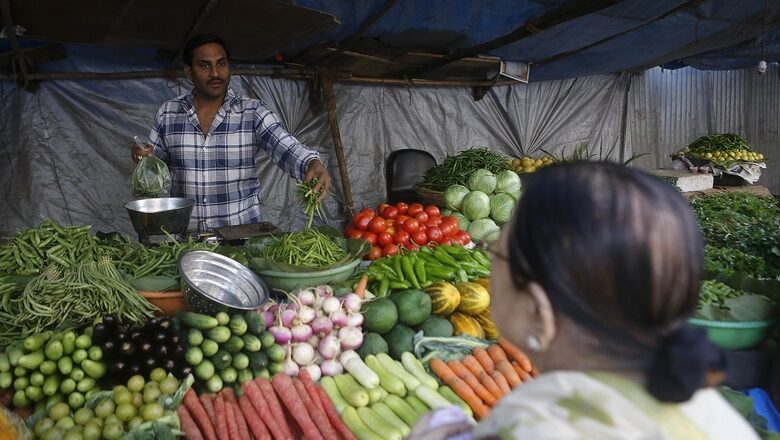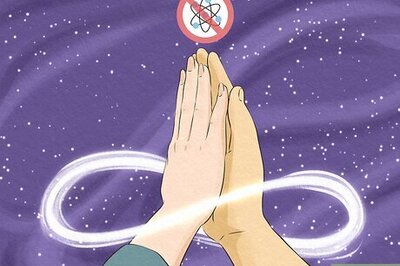
views
Inflation is a global concern and quite a big one at that. The world economy has taken a series of hits over the past three years. Inflation is hardly a problem exclusive to India. In fact, India is one of the last countries in the world to finally feel the pressure of rising prices. While several developed countries saw their economies getting battered, India remained insulated from any sort of cost-of-living crisis.
GLOBAL ECONOMIC PRESSURE CATCHES UP WITH INDIA?
When the world economy reels under pressure, it is imperative for an emerging major economy like India to take a few hits too. The ongoing war in Ukraine pushed the global economy to the brink. The biggest economies of the world — both American and European — struggled to deal with unprecedented inflation rates. Such was the situation that the historic inflation rates plunged entire countries into cost-of-living crises.
India did not face any such ordeal. From the very outset, India pragmatically chose to defeat energy inflation by purchasing Russian crude oil — a trend which is still continuing. Yet, inflation is now rising and Indians are finally shilling out more bucks at retail stores, mostly for food items. Vegetables are the driving force behind rising inflation. Even among vegetables, tomatoes are proving to be the real culprits. Here are some staggering numbers.
Tomato prices saw a 234 per cent month-on-month increase in July. Meanwhile, onion prices have risen by about 11.7 per cent year on year. The price of cereals, including rice, has risen by 13 per cent. Cumulatively, India’s annual retail inflation in July rose to its highest in 15 months. Retail inflation stood at 4.9 per cent in June, but in July, it jumped to 7.4 per cent. The figures breached the upper end of the RBI’s inflation band of 2 to 6 per cent for the first time in five months.
So, the signs have been ominous. India is indeed in the thick of an inflation spike. Thankfully, the government has been proactive on this front and has taken a series of steps to combat inflation.
WHAT THE MODI GOVT IS DOING TO COMBAT INFLATION
Solving a problem begins with acknowledging that the problem exists. That is what Prime Minister Narendra Modi did on Independence Day. He said India is trying its best to control inflation and that there have been “some successes” so far. He added that this is not a time for complacency. The highlight was this statement by the Prime Minister: “I have to take more steps in this direction to minimise the burden of inflation on my countrymen. And we will continue to take that step. My efforts will continue.”
Let’s first understand what’s driving this inflation spike. Sure, vegetable and cereal price hikes are a factor. But what has caused their prices to rise? You see, supplies are under stress due to erratic weather. With the onset of the monsoon season, much of North India has had to put up with severe flooding. Even before the monsoon arrived, in March and April, temperatures across the country rose. As a result, farmers had to deal with the menace of pests attacking their crops. This led to many growers abandoning their crops, especially tomatoes. This caused supply stress which only became apparent over the past two months, pushing prices to the sky.
Indians can expect a drop in tomato prices soon, as the Kharif tomato produce makes its way into markets. Since tomatoes are not the only cause of concern, the government has taken a series of steps to bring inflation into check. This includes its decision to import tur dal, apart from banning the exports of all non-basmati rice. Parallelly, the Modi government has also decided to release 50 lakh metric tonnes of wheat and 25 lakh metric tonnes of rice through e-auctions under the Open Market Sale Scheme. Also, India is set to cut wheat import tax to boost supplies.
RBI NOT JUMPING THE GUN YET
Around the world, the Central banks of various countries were rather immediate in rolling out interest rate hikes to curb inflation. The Reserve Bank of India (RBI) though, is waiting. The RBI is unlikely to raise interest rates unless headline inflation breaches the 6 per cent mark for two consecutive quarters. That’s a pragmatic approach to take because the last thing India wants right now is high-interest rates slowing economic growth, even if the end goal is curbing inflation.
Commercial banks in India are flush with cash. To combat inflation, it is crucial for any country to reduce liquidity in the system. And the RBI is doing so without hiking interest rates. It has directed all banks to maintain an incremental Cash Reserve Ratio (ICRR) of 10 per cent. CRR refers to the proportion of assets that banks need to keep as deposits with the RBI. The RBI says this move will remove Rs 1 lakh crore of excess liquidity from the system.
WHAT’S AT STAKE?
A lot. If there is one thing the Indian electorate despises, it is inflation. Price hikes have traditionally put off Indian voters almost always, and entire governments have regretted not acting in time to bring inflation in check. The Modi government faces a crucial year ahead. First, several states will go to polls later this year. Early next year, Modi is seeking a third term as Prime Minister and has made it very clear that he will be back.
This means the BJP-led government wants all hands on deck. Nothing can be left to chance. The coming elections are too crucial for the BJP to lose due to price rises. The world sees India as a bright spot in an otherwise dark economic horizon. The International Monetary Fund (IMF) says the Indian economy will grow at 6.1 per cent in the next fiscal. But inflation could play spoilsport. If inflation goes out of hand, the RBI will have no choice but to raise interest rates. That will inevitably take a toll on India’s GDP growth rate. India is marching towards its goal of becoming a $5 trillion economy soon. PM Modi has committed to making India the world’s third-largest economy in his third term. Needless to say, the government knows that the threat of inflation cannot be taken lightly.
It would be premature to sound gloomy and despondent just yet. There were short-lived factors that contributed to price hikes this year. Those factors have more or less been dealt with. This is why India banned rice exports while it made little to no sense to many. In fact, the Modi government placed a ban on wheat exports last year itself. This shows that the Centre has been keeping a watch on any and all inflationary trends, and has acted swiftly wherever it saw a red flag. Had it not, perhaps the inflation numbers would have been scarier. India is also contemplating purchasing wheat from Russia to boost domestic supplies which would, in turn, bring prices down. As I said, it’s all hands on deck.
While the latest inflation numbers are startling, they do not necessarily reflect a macroeconomic trend of the Indian economy being under stress. Call these numbers seasonal, because they are expected to stabilise soon enough. Having said that, as Prime Minister Modi said, this is not a time for complacency. Inflation is still a big challenge and needs to be dealt with head-on.
Views expressed in the above piece are personal and solely that of the author. They do not necessarily reflect News18’s views.














Comments
0 comment